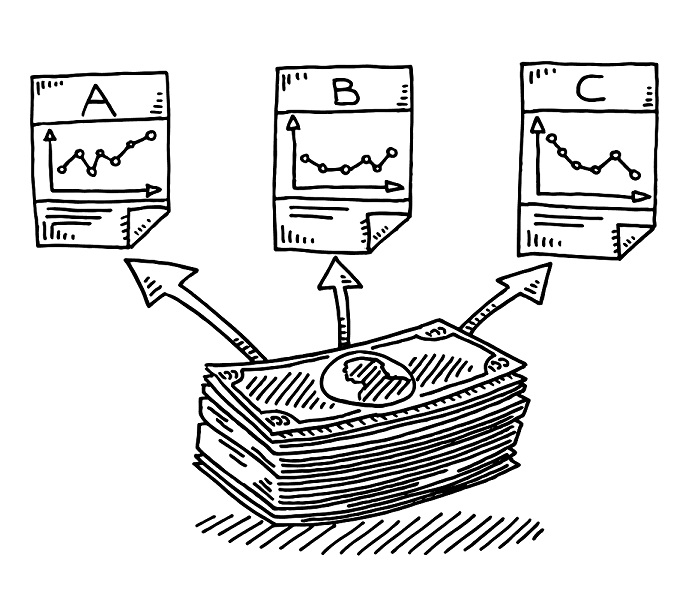If you don’t have time to read through the whole article, you can check out our short version below.
- Understanding financial terms can be daunting at first but is necessary in our investment journey
- An investment portfolio is built through using capital to purchase assets, which are then held in varying proportions in line with our investment objections.
- Financial ratios are used to evaluate the overall financial health of a company.
As a first-time investor, making sense of investment jargon – specialised terms used by wealth planners and investment managers – can be a daunting task. This is especially true if you have little or no experience in understanding financial concepts. Studies have shown that people have avoided investing altogether due to the perceived difficulty of understanding these terms.
Still, the fact remains that investing presents opportunities to make your money work harder, so do not feel intimidated by such terms. They can be explained simply. And the more you are familiar with them, the less you will shun too.
Here are 8 common investment terms you may encounter when speaking to your wealth planning manager or when making an investment decision.
8 Common investment terms

-
Investment Mandate
This term is often used to describe the objectives, guidelines and rules that investment managers abide by for a specific portfolio or pooled fund. Simply put, a mandate governs how an investment manager should invest money for clients. They are broadly defined and depend on investment objectives.
For example, a fund with a capital preservation mandate would mean that the investment manager of the portfolio will focus on minimising volatility, even if it means accepting lower returns. Likewise, an investment mandate tailored to capturing growth opportunities in tech companies could be higher risk but could result in better returns. As an investor, you must know the objective of that fund and what it is invested in. -
Asset Allocation
In terms of investment, asset allocation is a strategy that takes into consideration your individual risk tolerance. Once an assessment has been made on your risk profile, capital (the amount of savings you set aside for investment) is then divided across different asset classes like stocks, bonds, real estate, cash and commodities.
Bear in mind that each asset class has different levels of return and risk, and performance varies depending on the economic climate. In general, more risk averse investors may decide to allocate more capital to bonds and cash over equities. The reverse may hold for those who are more “risk friendly”. -
Investment Portfolio
An investment portfolio consists of a group of assets like stocks, bonds, real estate, cash and commodities held in varying proportions. Through a combination of these assets – asset allocation – investors aim to achieve a return in line with their risk tolerance or financial goals.
A model investment portfolio is an optimal portfolio, one that delivers you the maximum performance, given a level of risk. Often, this contains a set of neutral weightings across different asset classes. Taking equities as an example, this can be further broken -
Weighting
When you hear investment strategists saying they are overweight or underweight in a particular market, what they mean is that on a shorter-term basis, there is a preference for one market or asset class over another.
For example, in a balanced portfolio, the optimal weight for the long-term is 50% equities, and 50% in bonds. In the case of a balanced portfolio, both equities and bonds are said to be equal weight or neutral. If investors expect the economy to do well and equities are favoured, you will want to be overweight equities. As such, equities could take a 55% weighting in your portfolio, while bonds are underweight at 45% of the portfolio. -
Market Capitalisation

Market capitalisation or market cap refers to the total value of a listing based on the value of all of its shares at the current price. If a company shares are trading at Rupees1.50 and the total outstanding shares is 6 Crores, the company has a market capitalisation of Rs 9 Crore. Do note that market capitalisation fluctuates regularly as share prices change multiple times a day.
By using this measure, you can compare the value of the company in the open market and compare it with other companies. It also indicates the market’s view of a company’s prospects through the price participants are willing to pay for its stock. -
Price-to-earnings (PE) Ratio
The PE ratio is a measure of a company’s stock price relative to its earnings per share (EPS). Simply put, it tells you how much investors are willing to pay for Rs. 1 of a company’s earnings.
It tells you how many years it would take for a company to pay back its purchase price per share from after-tax profits alone at current profits if we assume no growth. The ratio is used for valuing companies and to find out whether they are overvalued or undervalued.
For example, if share A is trading at Rs. 25 and the EPS for the most recent 12-month period is Rs 5, then share A has a P/E ratio of Rs 25/Rs 5 = 5 years. Put another way, the customer is investing Rs 5 for every dollar of annual earnings; or, if earnings stayed constant it would take 5 years to recoup the share price.
Investors should note that the PE ratio does not in itself indicate whether the share is a bargain. The PE ratio depends on the market’s perception of the risk and future growth in earnings. -
Dividend yield

Simply put, the dividend yield is a measure of a company’s dividend per share divided by its share price, expressed as a percentage. It serves as an indicator of a return on a stock based only on its dividend. If dividend stays constant, then yield will rise if stock prices fall.
While a higher yield might appear attractive, do take note that the measure is often calculated based on historical dividends. This means that if share prices have declined sharply over a short period of time, dividend yields will be elevated. However, it does not make it an attractive investment, especially if the company is anticipating weak financial performance.
Dividend yielding products are an attractive option for retirees. Investing in less volatile, high dividend products is one way to supplement lost income due to retirement. If you prefer to receive regular payouts, this is an option for you too.
For those who prefer their investments to grow, they can choose to reinvest their dividends. -
Net asset value (NAV)
NAV represents the net value of an entity. It is calculated by subtracting the total value of liabilities from the total value of an entity’s assets. Similar to how share prices are an indicator of how much a company is worth, NAV serves as a measure of how a unit in a Mutual Fund is worth.
You may also find NAV useful when comparing Mutual Funds with similar investment mandates to invest in.
Ready to start?
Login to digibank by DBS app and start investing today
Disclaimer
This article is for information purposes only. We recommend you get in touch with your investment advisor for any financial advise.
Mutual Fund investments are subject to market risks, read all scheme related documents carefully.
DBS Bank India Limited – AMFI registered Mutual Fund Distributor (ARN-155319)






